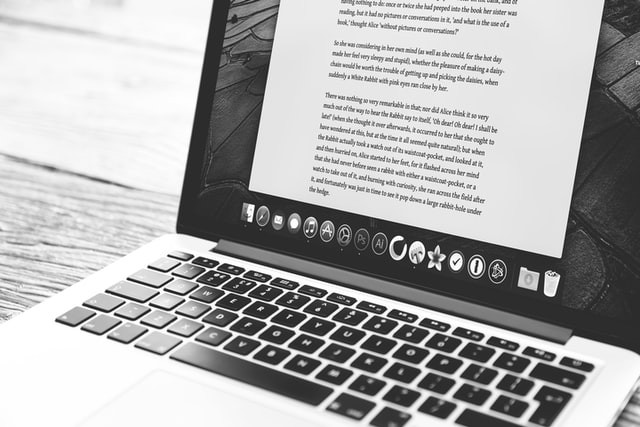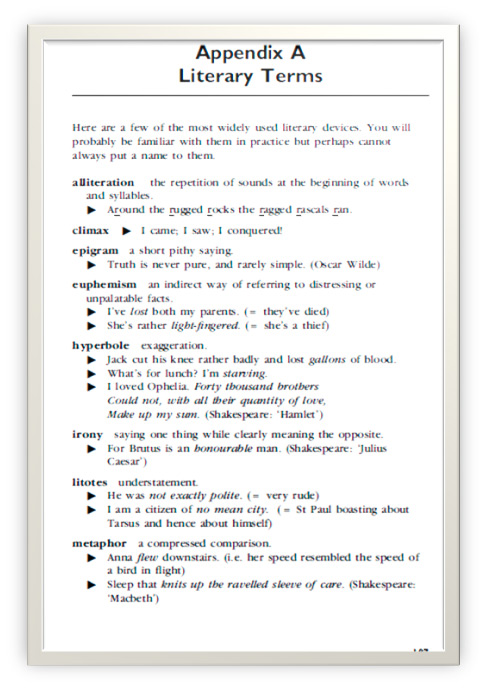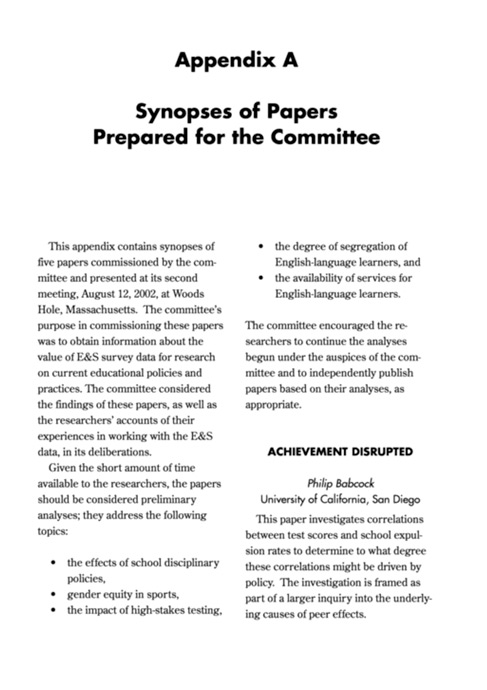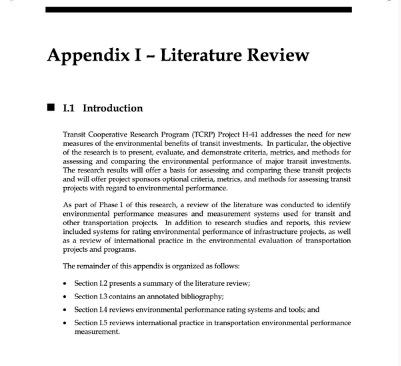
17 min
5
10.13.2022

What is An Appendix?
An appendix is an addendum to a research paper or book that contains supplementary information about the elements within the article or book itself.
- What is An Appendix?
- What is the Purpose of An Appendix in a Paper?
- What to Put in An Appendix?
- How To Write an Appendix
- How To Format an Appendix
- Appendix Examples
- Frequently Asked Questions:
- How do you reference an appendix in the text?
- Should you capitalize the word "Appendix?"
- Should you cite your appendix in the paper?
- Should the appendix come before or after the references section in your paper?
- What should I put in an appendix?
- How do you cite an image in an appendix?
- How do you include an appendix in an essay?
Appendices are a vital part of adding information to a topic. However, many students have difficulty figuring out what to include in an appendix and what shouldn't. But what is an appendix in writing? A research paper ought to stand independently without the added information in the added section. The information presented in this supplement should add to the report and allow for a more in-depth understanding of the work delivered. Elements like the definition of words or other scientific material are found in this addendum of a written paper or book. This is a succinct demonstration of what is an appendix in a research paper. Have you ever seen a sample of an appendix in a research paper? At the bottom of the page, we include a few samples for your perusal.
What is an appendix in an essay? Essays typically have addendums that give insight into how the paper was crafted. The information within a paper’s additional section is aimed at people who want to know more about the research. Usually, the addendum contains links or references to the source material used to write the paper. In some cases, such as in scientific essays, or discussions with data, the additional part of the paper will have the statistics or a link to find them.
What is the Purpose of An Appendix in a Paper?
The thought that the supplemental section is where an author should put additional information that they can't find anywhere else in their main text to fit is erroneous. This is not a good approach to have for when to define an appendix in a paper. Instead, the addendum should serve as a tool where supplementary information can be housed. The appendix should not contain vital information crucial to the paper or book. That information is better represented within the body of the paper itself.
An addendum in a paper is an essential part of communicating information to the reader that doesn’t have a place within the main body. The paper appendix sample included at the bottom of the page shows what information is typically included in those sections.
The addendum in a book would significantly differ from one in a research paper. The appendix usually lists citations, definitions, or other documents for further reading in a book. The additional section summarizes the supplementary materials used for research in a research paper. Graphical representations of facts and statistics may also find their way into a research paper's supplement.
Another crucial piece of information, mostly for business professionals, is how to write an appendix in a report. To help report writers, an appendix format example is included at the bottom of the page in several styles, depending on what the writer wishes to use. See the paper appendix example included at the bottom of the page to learn more.
What to Put in An Appendix?
Appendices aren't a dumping ground for extraneous information, even though many people (including published authors) tend to treat them that way. Thus, what to write in the appendix tends to be a question many students ask their lecturers. Unfortunately, there are very few real guidelines about what a particular lecturer wants. However, there are many structured formats for producing these addendums, based on the paper’s reference style.
Proper appendix format, therefore, must follow certain key rules. What to include in an appendix is a pertinent question, regardless of if it’s for a book or a research paper. This supplementary section serves a particular purpose, and to this end, it should present supplementary factual data that help round out the edges of the paper’s central premise and argument.
Among the most common items that should be included when creating an appendix are:
- Raw Data: Experimental data is a good candidate for inclusion. If the paper deals with a statistical analysis of a survey, the survey data should be included so that others can check your work.
- Tables and Graphs: Some authors include supporting tables and graphs (not those key to their thesis statement). If doing so, these elements should be labeled independently from those within the text of the paper.
- Maps, Photographs, or Diagrams: If you have supporting information you would like to reference within the text, these would fit well within the appendix. It's vital to remember that these additions are supplementary. If the paper needs them for the reader to understand something, they're better off included within the text itself.
- Letters and Correspondence: Collaborations with other authors or research personnel can also be included, allowing readers to get an idea of the work that went into the book or paper.
- Questionnaires or Survey Forms: If data is collected through these means, including the forms used for this data collection can be useful in helping the reader understand the context of the data.
- Research Instruments: Specialized research instruments may need to be mentioned, and their operating parameters discussed. Offering an insight into how the data was collected along with potential margins of error can help replicate an experiment to get a similar result.
- Sample Calculations: These calculations may include a discussion of methods used, including formulae, or detailed descriptions relating the significance of the measurements to the conclusions drawn.
- Interview Transcripts: If interviews are done, these transcripts should be provided in their original transcripted forms to readers if they would like to go through the interview themselves.
A student should remember that appendices shouldn't be complicated. How to structure an appendix is crucial knowledge to remain within the boundaries of referencing guidelines. They simply present information that will help readers grasp the paper and its focus. If there is too much data to add, consider housing it on google drive and giving a simplified link when making the appendix itself.
A paper or book isn't limited to a single supplementary section either. If there are multiple appendices that you would like to add, you're free to create a supplement within your main document for each one of them. Breaking these appendices into broad categories makes it easier for readers to find the information they're looking for within the paper or book itself. If you have multiple appendices, it's best to arrange them in the order they were mentioned in the text.
Does Your Paper Even Need an Appendix?
A common question many new researchers have is whether their research paper even requires an addendum. To determine whether information should go into the supplementary section or not, an individual should seek to answer the following questions:
- Is the material you intend to include necessary for a reader to understand what's in the paper? If so, you're better off including it within the body of the text.
- Would the information included in the supplement interrupt the flow of the paper? If the answer is yes, then it should make up the appendix and be left out of the body of the article.
- Is the information good background for what's already within your paper? If so, the information is a good candidate.
Appendices complete a paper by offering the reader supplementary information they would not have gotten within the article but allow for the contextualization of the research process. Authors should examine their appendices and see that they meet the minimum requirement for inclusion within the text.
How To Write an Appendix
So, exactly how do you write an appendix? Appendices may be an easier part of a text to complete but writing them does take time. As mentioned above, several different elements may be included in this additional section. Before writing the appendix, the best practice would be to collect and organize all the data to know what you have and what you don't. This helps you figure out how to set up an appendix in a way that makes sense.
Appendices are also referenced throughout the text. If you intend to have more than one supplementary section, you should note when they are mentioned within the text. This gives you an idea of the flow of appendices since they should be created in the order they are referenced within the text.
It’s a good practice to know beforehand how to include an appendix in the text. Ordering the content means making it more approachable and reader-friendly. To this end, an author should try to sectionalize the appendices based on the type of information they have. So, for example, an author should include all collected data in an additional section and save questionnaires and surveys for another one.
Appendices go after the reference list. This arrangement is the accepted standard in a paper or a book. The progression also makes it easier to see where the text for the paper or book ends and the appendices start. The list of references is like a boundary that the reader encounters to break up the main text from the appendices.
Page numbers in the appendix layout should follow the same numbering format as the rest of the manuscript. It's essential to continue the numbering from the text into the extra section so that it feels like part of the book or paper.
Appendices require more than just copying and pasting data or references. An author who wants a polished piece of text needs to spend time on their appendices. Proofreading and fact-checking appendices are time-consuming, but it's necessary to ensure that the paper is complete. You may have to do one or more revisions to clarify the information within the supplementary section. To help with this, one should get someone who is not a researcher to read through the appendices. Having a non-specialist do this gives an author some feedback on what the average individual may see when skimming through the paper’s addendum.
Writing an appendix can be broken down, therefore, into a simple, stepwise checklist:
Collect Data
All the relevant information that the paper or book can use for its supplementary section should be collected and collated. This approach makes it easier to know the order of these addendums and which supplementary information should go where. Content within each additional section may include surveys, questionnaires, interviews, graphs, charts, or raw experimental data, as noted above.
Title the Section
The title of the supplementary section is what you will use to refer to it throughout the text. It's crucial that you use the same title to refer to this section throughout the paper, or else you risk confusing your reader.
Order the Data
The data content should be presented in the order that the reader encounters it within the text. This approach makes for a more readable and approachable supplementary section.
Place the Additional Sections Appropriately
The addendum sections should go after the list of references, allowing the reader a break in the paper.
Proofread and Polish
Rereading the content of the appendix and ensuring that it's formatted properly is a crucial part of preparing it for publication. Depending on the publication guidelines, it may take some time to perfect the location and orientation. Having an independent observer give feedback for this process is ideal.
An appendix is an additional part of a book or scientific paper that should be used to reference the information and data that has no direct bearing on the study but is still helpful to a reader. With this in mind, the supplementary section should be as readable as possible without sacrificing the presentation of the facts.
How To Format an Appendix
How to do an appendix for a research paper? Appendices can be formatted differently depending on the type of reference style you intend to use. However, there are a few standard guidelines for the naming and formatting of an appendix. How to structure an appendix varies depending on the reference format. Each of these additional sections ought to contain:
- A number (1, 2, etc.) or a letter (A, B, etc.)
- A title
- Page numbers
- References within the text
- Links that allow for quick access
It pays to know how to write an appendix for a research paper. While there are several constructions and referencing styles for an appendix section of a research paper, the two most common referencing styles used by authors are APA referencing and MLA referencing. These are used in particular situations and have distinct differences in constructing their appendices.
|
APA Style |
MLA Style |
|
Typically, APA appendices are used for APA papers, such as essays, research papers, dissertations, theses, etc. |
MLA papers use MLA appendices for their essays, papers, theses, dissertations, etc. |
|
Found in sociology, linguistics, psychology, economics, criminology, and social sciences. |
Found in language arts, humanities, and other cultural studies. |
Rules for APA Referencing
The APA appendix is widely used in academia, and it's common to see them in published papers. Because of the widespread use of the APA referencing format, many students may have encountered these appendices in books or articles they have perused before. The APA has well-defined guidelines for constructing appendices, and publications are encouraged to follow these.
- Appendices should be numbered as "Appendix #," where the X can be either a letter or a number. If there is only one extra section, it is simply labeled as "Appendix."
- References from the text should be of the form "see Appendix #."
- Each item should go into its own extra section.
- If the addendum contains a source, the reference should be inserted according to APA style guidelines.
- Every additional section should begin on its own separate page.
- The first paragraph should be written without intent.
- The section’s label and title should be center-aligned and capitalized.
- The addendum should follow similar style guidelines to the rest of the paper (double spaced, Times New Roman Size 12 font, etc.)
Rules for MLA Referencing
MLA’s appendices are similar to the APA. The 9th edition is currently used for the MLA style guidelines, but some organizations and institutions still use the 8th edition for their referencing (Modern Language Association of America, 2021). A few differences stand out between the MLA and the APA version of constructing the addendum.
- Appendices should go in order of appearance within the text.
- Referencing the appendices can be done using the same format as the APA ("see Appendix #"), but one can just as easily use "refer to Appendix #" as well.
- The labels and titles of each addendum should be clearly defined and readable.
- In-text citations can be included but should follow the MLA guidelines for citations.
- Each added section should deal with its own issue. Try not to overlap appendices. If necessary, construct more than one added section to house the supplemental information.
- The MLA appendix typically goes before the works cited, not after it, as in most appendices.
Appendix Examples
An appendix report format should conform to one or the other major referencing systems currently used in academia. The best way to understand appendix formatting is to see what appendices are supposed to look like.
Added sections can show up in a variety of places, as already mentioned. These examples are a small cross-section of the types of elements that may show up in reports or papers. In general, these additions can span a wide range of supplements. The text mentioned in these examples is one of those supplementary additions. However, there are also other additions such as tables, raw data, and instrumentation details that aren’t covered in these examples.
Here, we have an MLA style example and an APA style sample to examine how they are created and what a student should do to maintain what is expected from these guidelines.
APA Style

The title is centered and clearly labeled, separating it from the rest of the text within the body. The page numbering continues from the rest of the paper, ensuring that the example appendix doesn't feel like an add-on or extra. The information contained within this added section (a collection of terms that the reader might find helpful to know) is supplementary. The paper or book itself doesn't require the reader to understand these terms, but the reader may be encouraged to learn more by reading the definitions mentioned. This is an excellent example of how to structure an appendix and the information it should contain. It's also a good representation of how to make an appendix for a paper in APA style.
MLA Style

Above is an example of an appendix in a research paper. The appendix page example title is clearly visible and stylistically unique compared to the rest of the text on the page, in keeping with MLA standards. The appendix example collates all the information that pertains to the title into a single reference, making it easy for a reader to flip through the references as they like.
The appendix writing example also does not contain any core information that the paper requires, but these supplementary data sources can help the reader contextualize the data presented. The additional section is appropriately numbered, showing that it's part of the paper, adding to the sense of the paper's completeness. This is a great example of how to write an appendix for a paper in MLA format.
A Bad Example to Avoid

The above is a sample of the appendix in the research paper. While having the distinctive labeling for the title, this APA appendix page format shows a glaring error. Whether through notable inclusion or automatic numbering, there are two sets of numbers, making the referencing questionable. Additionally, the appendix page sample tries to incorporate several different and distinct types of information within a single addendum, leading to possible confusion from the reader. The literature review forms a core part of the research in many engineering papers and is included as part of the manuscript, not as a supplement. Ideally, students should avoid including appendices that look like this in their research papers or publications. This picture is not a good appendix writing example.
These examples only cover text addendums. A student may want to know how to make an appendix for pictures, for example. Unfortunately, we weren’t able to source an appendix picture example. These addendums typically follow a similar methodology to text appendices. However, the appendix essay example we present would fall into a different format to one with pictures and maps.
An example of an appendix in a report would follow much of these same guidelines. An appendix sample in a project report typically houses tables and statistics that are pertinent to the report but isn’t directly referenced. Typically, the appendix meaning in a report relies on the data provided within the main document.
Frequently Asked Questions:
How do you reference an appendix in the text?
An author can use "see Appendix #" as a general reference for their appendices. If the author uses MLA referencing, "refer to Appendix #" is also acceptable. Referencing the appendices helps the reader see the link between the main text and the addendums.
Should you capitalize the word "Appendix?"
When referring to the additional section in question, the word should be capitalized as it relates to the title of a section of the paper. Thus, the reference for these addendums should be capitalized as it refers to the title of the added section.
Should you cite your appendix in the paper?
Appendices are meant to be referred to. Depending on your referencing type, your citation may differ. While some publications don’t reference their appendices, it’s good practice to ensure that they have links within the document.
Should the appendix come before or after the references section in your paper?
The APA guidelines and standard rule-of-thumb suggest that the added section comes after the references. However, the MLA guidelines state that they should come before the works cited section. The location will depend on what type of referencing you are using for your paper.
What should I put in an appendix?
Your added section should include additional and supplementary information not crucial to understanding the paper, such as survey forms, questionnaires, raw data, interviews, etc. These will differ from paper to paper, but the appendices should always be additional information that isn’t strictly necessary to understand the content of the paper.
How do you cite an image in an appendix?
When citing an image in your added sections, it should have a clearly numbered reference, e.g., “Figure X,” where X is the number of the figure in order of appearance. On the line beneath the image number, the author should include a short descriptive title, giving background on the image. A note can be included beneath the figure if necessary.
How do you include an appendix in an essay?
Essay appendices follow the same format as appendices in research papers and books. Just like in these other academic works, the addendum should come after the main work and contain information that is supplemental to the written essay but not necessary for the essay to be understood by a reader.



